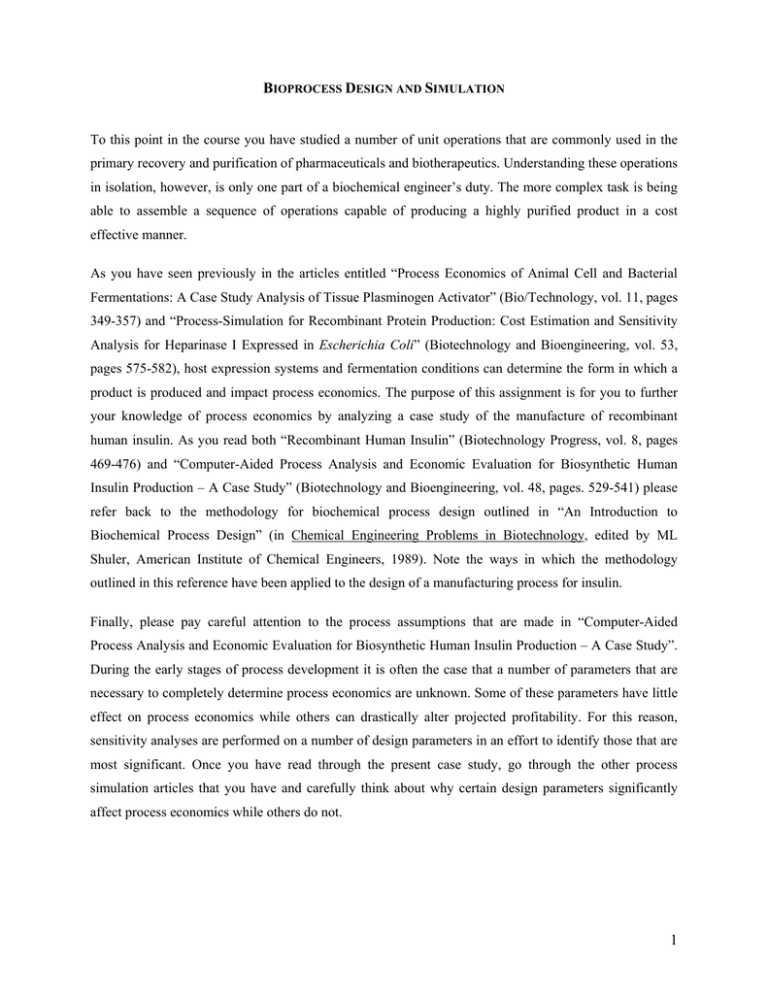B D S
advertisement

BIOPROCESS DESIGN AND SIMULATION To this point in the course you have studied a number of unit operations that are commonly used in the primary recovery and purification of pharmaceuticals and biotherapeutics. Understanding these operations in isolation, however, is only one part of a biochemical engineer’s duty. The more complex task is being able to assemble a sequence of operations capable of producing a highly purified product in a cost effective manner. As you have seen previously in the articles entitled “Process Economics of Animal Cell and Bacterial Fermentations: A Case Study Analysis of Tissue Plasminogen Activator” (Bio/Technology, vol. 11, pages 349-357) and “Process-Simulation for Recombinant Protein Production: Cost Estimation and Sensitivity Analysis for Heparinase I Expressed in Escherichia Coli” (Biotechnology and Bioengineering, vol. 53, pages 575-582), host expression systems and fermentation conditions can determine the form in which a product is produced and impact process economics. The purpose of this assignment is for you to further your knowledge of process economics by analyzing a case study of the manufacture of recombinant human insulin. As you read both “Recombinant Human Insulin” (Biotechnology Progress, vol. 8, pages 469-476) and “Computer-Aided Process Analysis and Economic Evaluation for Biosynthetic Human Insulin Production – A Case Study” (Biotechnology and Bioengineering, vol. 48, pages. 529-541) please refer back to the methodology for biochemical process design outlined in “An Introduction to Biochemical Process Design” (in Chemical Engineering Problems in Biotechnology, edited by ML Shuler, American Institute of Chemical Engineers, 1989). Note the ways in which the methodology outlined in this reference have been applied to the design of a manufacturing process for insulin. Finally, please pay careful attention to the process assumptions that are made in “Computer-Aided Process Analysis and Economic Evaluation for Biosynthetic Human Insulin Production – A Case Study”. During the early stages of process development it is often the case that a number of parameters that are necessary to completely determine process economics are unknown. Some of these parameters have little effect on process economics while others can drastically alter projected profitability. For this reason, sensitivity analyses are performed on a number of design parameters in an effort to identify those that are most significant. Once you have read through the present case study, go through the other process simulation articles that you have and carefully think about why certain design parameters significantly affect process economics while others do not. 1


